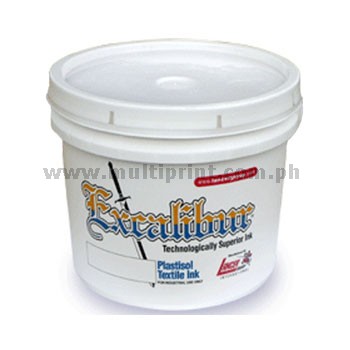502PF Viscosity Reducer is an intense product that in limited amounts greatly decreases the viscosity of the ink as well as increasing the flow characteristics making the ink clean completely from the screen. Limited amounts of 502PF Viscosity Reducer will make designs on light-colored shirts simulate the feel of a water-base print. As 502PF Viscosity Reducer is not a balanced product and can cause curing issues with any ink that it is added into, care should be taken and the following cautions explicitly followed when adding this product to any Excalibur plastisol ink!
- Always stir the ink thoroughly prior to adding to the screen in order to break down any false body that builds up during storage. This should always been done prior to adding 502PF Viscosity Reducer to any ink. If using an ink paddle with a variable speed drill always set drill to turn on a slow speed to not allow any heat from the friction of stirring to build up in the ink. Introducing heat to the ink will begin the gelling process and make the ink more difficult to print.
- Adding too much 502PF Viscosity Reducer will affect the cure characteristics of the ink requiring not only a higher temperature but a longer dwell time for the ink to stay inside the conveyor over and reach a full cure. For this reason do NOT add more then 3-5% of this product to any ink and always test the finished print for proper cure prior to beginning any production run.
- Adding too much 502PF Viscosity Reducer will diminish opacity particularly when printing a high-opacity ink onto dark backgrounds. For this reason best results are attained by adding no more than 1-2% of 502PF by weight to any high-opacity ink that is being printed on dark backgrounds.
- Adding too much 502PF Viscosity Reducer will diminish the film strength of the finished print and cause a phenomena called “fibrillation” where the fiber of the shirt stands up during the washing process and breaks through the ink film causing the print to look faded. This phenomena can also look like undercure of the print. In order to determine if the print is “fibrillating” or “undercured” simply wet your thumb or rub a wet cloth over the print. If the colors in the print darken and appear stronger or more vibrant the shirt is “fibrillating”. If the print looks the same after wetting it is undercured and needs to be cured longer in your conveyor oven.




